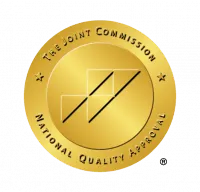What Is Problem Drinking?
Problem drinking exists on a spectrum. It depends on how much you drink and how drinking affects your behavior, health, and other aspects of your life.
In broad terms, problem drinking is a pattern of drinking that negatively impacts a person’s life. People may use the term “problem drinking” to describe someone they believe drinks too much, or someone whose drinking interferes with their career, relationships, or finances.
It’s hard to estimate the prevalence of “problem drinking” vs. alcohol use disorder (AUD) because it’s more difficult to define and quantify. The issue often develops gradually, and many people exist in a gray area. However, in the 2021 National Survey on Drug Use and Health, at least 60 million Americans over age 12 reported drinking to excess in the past month. So, although it’s difficult to measure, it’s likely that problematic drinking is widespread in the United States.
What Does Problem Drinking Actually Look Like?
In practice, a problem drinker is someone who continues drinking despite negative consequences. It might look like:
- Avoiding family and friends
- Having alcohol-related arguments
- Relationship issues caused by alcohol use
- Spending too much money on alcohol
- Missing work due to drinking or hangovers
- Poor performance at work due to drinking or hangovers
- Mental health issues related to alcohol, such as depression
- Physical health issues related to alcohol, such as a weakened immune system
- Frequently drinking more than planned
- Wanting to cut back or stop drinking, but being unable to do so
Because alcohol use disorder develops gradually, the danger is that it can “sneak up” on you. By the time you’re aware that alcohol is causing issues in your life, you may be at the point where you’ve lost control of your drinking. Without the right support, it’s tough to reel in problem drinking.

Problem Drinking vs. Alcoholism
Problem drinking may or may not be alcoholism. It often overlaps with the definition of mild to moderate AUD. Some people may even describe severe AUD as “problem drinking” if they’re uncomfortable with directly calling out the issue.
Both patterns are marked by an unhealthy relationship with alcohol. When it comes to a problem drinker vs. alcoholic, a key distinction is that people with AUD are physically dependent on alcohol. A person crosses the line to at least mild alcohol use disorder when not drinking causes physical withdrawal symptoms. These symptoms may include headache, nausea, vomiting, sweating, shaky hands, racing heart, confusion, fever, and high blood pressure.
Read more: What is Alcohol Use Disorder?
Why Problem Drinking Sometimes Goes Unnoticed
Problem drinking is sometimes overlooked because our society considers drinking socially acceptable, at least to a degree. Environments like college and stressful workplaces view alcohol as part of the culture, sometimes even encouraging drinking.
The same is true of families or groups of friends who incorporate alcohol in most events and social gatherings. When everyone around you accepts drinking and regularly enjoys it, it’s hard to notice when your alcohol consumption becomes problematic.
For this reason, it’s important to know the standard guidelines are for alcohol consumption. More than one serving of alcohol per day for women, and more than two servings per day for men is considered higher risk by the National Institute on Alcohol Abuse and Alcoholism. If you are regularly drinking above this level, regardless of labels, it’s good to check in with yourself.
Read more: Drinking Levels Defined
How To Know If You’ve Become a Problem Drinker
Warning signs that you’ve become a problem drinker include:
- Consistently drinking longer or more than you planned
- Spending a lot of time drinking and/or recovering from drinking
- Needing to drink more over time to experience the same effects, or “buzz”
- Experiencing cravings for alcohol
- Giving up other activities you enjoy to drink
- Dropping the ball with work, schoolwork, relationships, or other commitments because of drinking
- Experiencing legal trouble or dangerous/harmful situations as a result of drinking
- Wanting to cut back or stop, but not being able to
Why You Don’t Need To Be an “Alcoholic” To Get Help
Alcohol use disorder exists on a spectrum, and doesn’t always line up with traditional definitions of alcoholism. You don’t have to consider yourself an “alcoholic” to get support for reducing or quitting drinking.
In fact, the longer you wait to address your drinking, the more difficult it becomes to make a change. Long-term alcohol use causes changes in brain chemistry that make quitting or cutting back an uphill battle. Just like a doctor wouldn’t wait to treat an illness until it progresses, it’s better not to wait for full-fledged alcoholism to address problem drinking.
Will insurance cover treatment? Verify Coverage
Have Questions? Call (800) 504-5360



